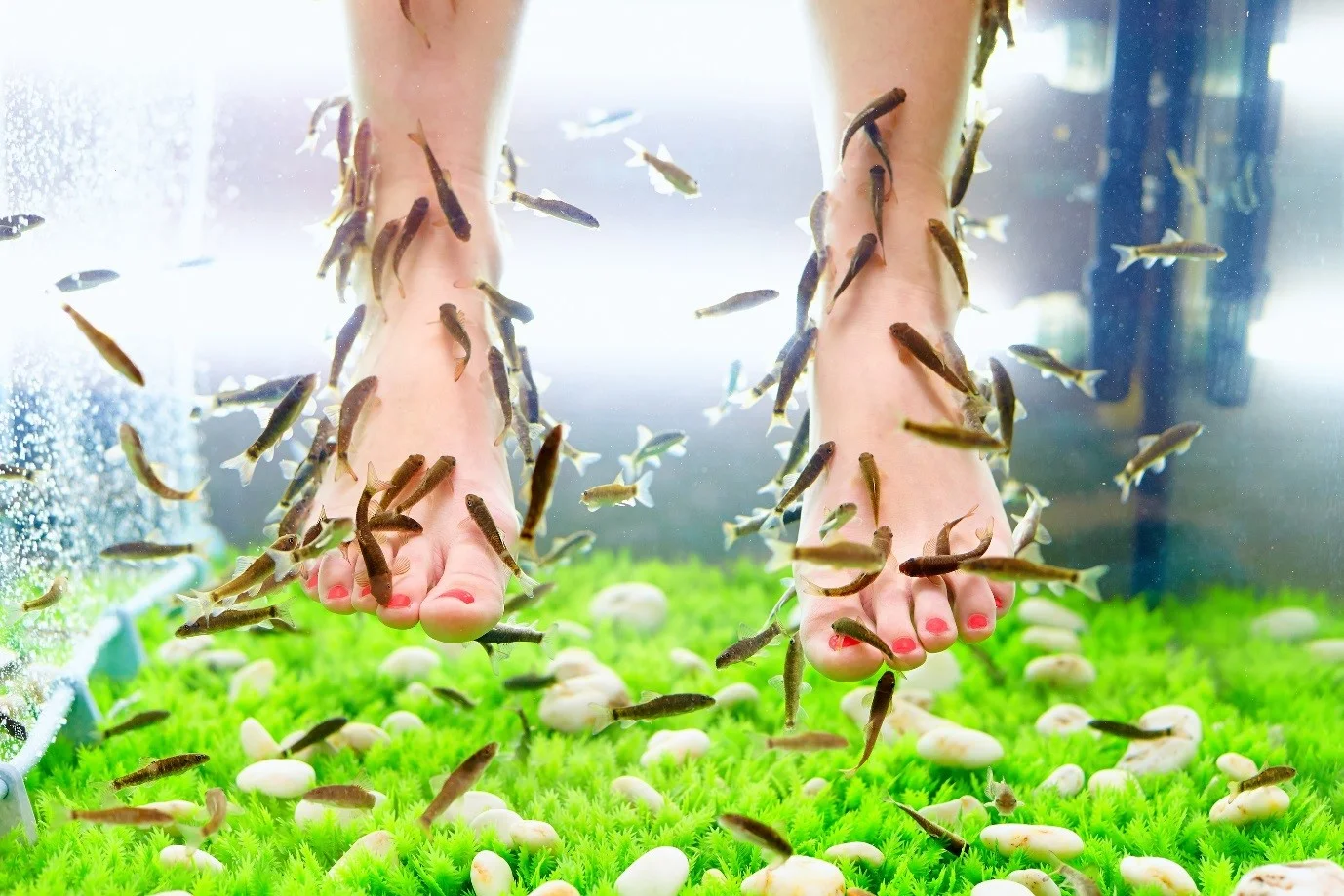For those that may be unfamiliar with the term, a fish (yes, we said fish!) pedicure is a cosmetic treatment in which one immerses their feet, or sometimes their entire bodies, into a small tank containing about 100 garra rufa fish.
Garra rufa fish are sometimes called “doctor fish” or "nibble fish" because they eat away at the dead skin or callouses found on peoples feet leaving newer, softer skin behind.
The fish are native to Turkey, where they have been used as a medicinal treatment for individuals with skin diseases like eczema or psoriasis. Outside of Turkey, Asian countries began exporting the fish and opening salons and spas. Then Europe began picking up on the craze and soon after America followed suit. Fish treatments have been popping up in spas all over the world periodically ever since.
Now the words “eat away” may be jumping out at some people reading this but there’s no need to worry. Garra rufa fish have no teeth so they cannot remove live skin, instead they just nibble and suck at dead skin. There is no pain involved. In fact, most people describe the experience as quite pleasant presenting with a tickly or tingly like sensation.
Fish pedicures might sound like a win-win situation to some – the fish get to eat and you get to shed your dead skin – but they’re not without their controversy.
Following a number of enquiries, The Health Protection Agency (HPA) in the UK founded a working panel to offer guidance on the treatment. The panel found that in a spa setting ‘there is the potential for transmission of a range of infections, either from fish to person (during the nibbling process), water to person (from the bacteria that can multiply in water), or person to person (via water, surrounding surfaces and fish)'.
However, the group insisted that the overall risk of infection is ‘likely to be very low' as long as proper standards of hygiene are adhered to. But the group did warn that anyone with open sores or cuts, an underlying medical condition such as diabetes or an immune system compromised by AIDS, cancer or advanced age should steer clear of the treatment because these people are likely to be at an increased risk of infection.
The Centres for Disease Control and Prevention (CDC) in the US (where fish pedicures are currently banned in 10 states) has given similar reasons for avoiding it. These include;
- Fish pedicure tubs can't be completely sanitised when the fish are present.
- The fish themselves can't be disinfected between customers, but due to financial constraints, spas can't use new fish for each customer.
- Chinese "Chinchin" fish are sometimes mistaken for and sold as garra rufa. Chinchin can grow teeth, increasing the risk of drawing blood and infection.
- Garra rufa are not native to the United States and could cause a threat to plant and animal life if released into the wild.
- The fish will only eat skin if not provided with any other food, which can constitute as animal cruelty.
The bottom line: studies have shown that the risk of infection associated with fish pedicures is likely to be very low, particularly if the salon has the proper equipment, fully trained staff and the appropriate hygiene procedures.
You can help minimise your risk of infection by ensuring all cuts or sores are healed before undergoing treatment and by not shaving or waxing your legs 24 hours before your appointment.
To eliminate the risk of infection altogether its best to book an appointment with your podiatrist. At Spectrum, our Podiatrists have clinical experience in the diagnoses and treatment of calluses, and so can provide treatment in a safe and healthy manner avoiding any dangerous complications associated with other treatment methods.

